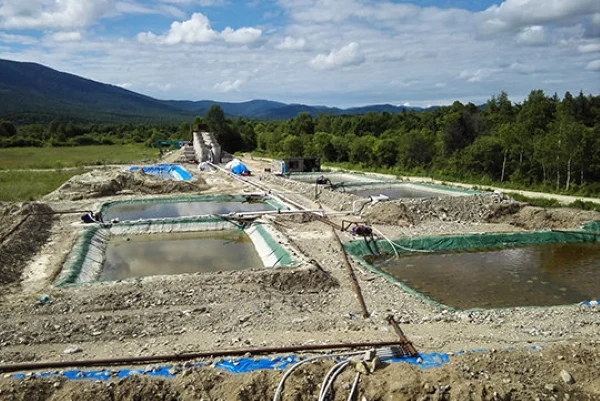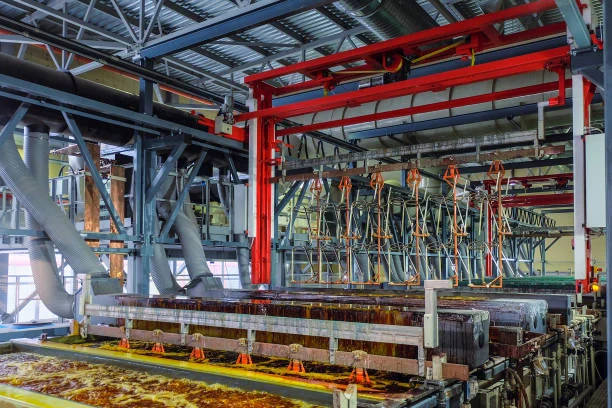
In the realm of gold mining, heap leaching has emerged as a widely adopted and cost - effective method for extracting gold from low - grade ores. Among the various components of the heap leaching process, sodium cyanide plays a pivotal and indispensable role.
Introduction to Gold Heap Leaching
Gold heap leaching is a process where low - grade gold ores or flotation tailings are piled on a specially constructed pad. The ore is then subjected to the action of a leaching solution, which percolates through the ore heap, dissolving the gold present in the ore. This method is particularly suitable for treating large volumes of low - grade gold ores, as it offers a relatively simple and economic way to extract gold compared to more complex and expensive milling and smelting processes.
The Role of Sodium Cyanide in Gold Dissolution
Chemical Reaction Mechanism
Sodium cyanide (NaCN) is a powerful leaching agent in gold heap leaching. The key to its effectiveness lies in its ability to react with gold in the presence of oxygen. The chemical reaction can be simplified as follows: 4Au + 8NaCN+O_{2}+2H_{2}O = 4Na[Au(CN)_{2}]+4NaOH
In this reaction, gold (Au) reacts with Sodium Cyanide and oxygen to form a soluble gold - cyanide complex, sodium dicyanoaurate (Na[Au(CN)_{2}]). This complexation reaction allows the gold, which is often present in a very fine - grained or disseminated form in the ore, to be dissolved into the solution, thus enabling its subsequent recovery.
Selectivity for Gold
One of the remarkable features of Sodium cyanide in heap leaching is its selectivity for gold. While the ore may contain various other elements and minerals, sodium cyanide preferentially reacts with gold under the appropriate conditions. This selectivity is crucial as it allows for the extraction of gold with relatively little interference from other components in the ore, reducing the complexity and cost of subsequent separation and purification steps.
Influence on the Efficiency of Heap Leaching
Leaching Rate
The use of sodium cyanide significantly affects the leaching rate of gold. A proper concentration of sodium cyanide in the leaching solution can accelerate the dissolution of gold. Generally, increasing the concentration of sodium cyanide within a certain range can enhance the rate at which the gold - cyanide complex is formed. However, this is not a linear relationship, and extremely high concentrations may lead to other issues such as increased reagent costs and potential environmental problems.
Gold Recovery Rate
The presence of sodium cyanide is directly related to the gold recovery rate. In well - designed and operated heap leaching systems, the use of sodium cyanide can achieve high gold recovery rates, often in the range of 60 - 90% or even higher depending on the nature of the ore. A higher recovery rate means more efficient utilization of the gold resources in the ore, which is of great economic significance for mining operations.
Optimization of Sodium Cyanide Use in Heap Leaching
Concentration Control
Determining the optimal concentration of sodium cyanide in the leaching solution is a crucial aspect of heap leaching optimization. This requires careful consideration of factors such as the ore grade, mineralogy, and the presence of other elements that may consume cyanide. For example, ores containing high levels of copper, zinc, or iron sulfides may require higher cyanide concentrations to ensure sufficient gold dissolution, as these metals can react with cyanide and compete with gold for the reagent.
pH Adjustment
The pH of the leaching solution also plays an important role in the effectiveness of sodium cyanide. Sodium cyanide is more stable and reactive in an alkaline environment. Usually, the pH of the leaching solution in gold heap leaching is maintained in the range of 9 - 11. Adjusting the pH can not only enhance the stability of sodium cyanide but also affect the solubility of other metal - cyanide complexes, thereby improving the selectivity of gold extraction.
Environmental and Safety Considerations
Toxicity and Environmental Impact
Sodium cyanide is a highly toxic substance. In the context of gold heap leaching, strict environmental management measures are necessary to prevent its release into the environment. Spills or improper disposal of sodium cyanide - containing solutions can have severe consequences for aquatic life, soil quality, and human health. For example, if sodium cyanide - contaminated leachate leaks into nearby water bodies, it can cause mass fish kills and contaminate drinking water sources.
Safety Precautions in Handling
In mining operations, strict safety protocols must be followed when handling sodium cyanide. Workers involved in the preparation, transportation, and application of sodium cyanide solutions need to be provided with appropriate personal protective equipment, including gloves, masks, and safety goggles. Storage facilities for sodium cyanide should be designed to prevent leaks and ensure proper ventilation to avoid the accumulation of toxic fumes.
In conclusion, sodium cyanide is an essential and irreplaceable reagent in gold heap leaching. Its unique chemical properties enable the efficient dissolution and extraction of gold from low - grade ores. However, with its great benefits come significant environmental and safety challenges that must be carefully managed to ensure sustainable and responsible gold mining operations.
- Random Content
- Hot content
- Hot review content
- 99.5% min Ammonium Chloride For Industrial Use
- calcium chloride anhydrous for food
- Fertilizer magnesium sulfate/magnesium sulfate monohydrate
- Sodium alpha olefin sulfonate (AOS)
- Magnesium Sulfate
- Dimethyl Carbonate (DMC)
- Potassium sorbate 99% Food Preservative
- 1Discounted Sodium Cyanide (CAS: 143-33-9) for Mining - High Quality & Competitive Pricing
- 2Sodium Cyanide 98% CAS 143-33-9 gold dressing agent Essential for Mining and Chemical Industries
- 3Sodium Cyanide 98%+ CAS 143-33-9
- 4China's New Regulations on Sodium Cyanide Exports and Guidance for International Buyers
- 5Anhydrous Oxalic acid 99.6% Industrial Grade
- 6Oxalic acid for mining 99.6%
- 7Reagent Grade/Industrial Grade Hydrochloric Acid min.31%
- 1Sodium Cyanide 98% CAS 143-33-9 gold dressing agent Essential for Mining and Chemical Industries
- 2High Quality 99% Purity of Cyanuric chloride ISO 9001:2005 REACH Verified Producer
- 3 High-Quality Sodium Cyanide for Leaching
- 4Powdery emulsion explosive
- 5Industry Grade Electron grade 98% Sulfuric Acid H2SO4 Sulphuric Acid Battery Acid Industrial Sulfuric Acid
- 6Colloidal emulsion explosive
- 7sodium hydrosulfide 70% flakes used Mining Industry












Online message consultation
Add comment: